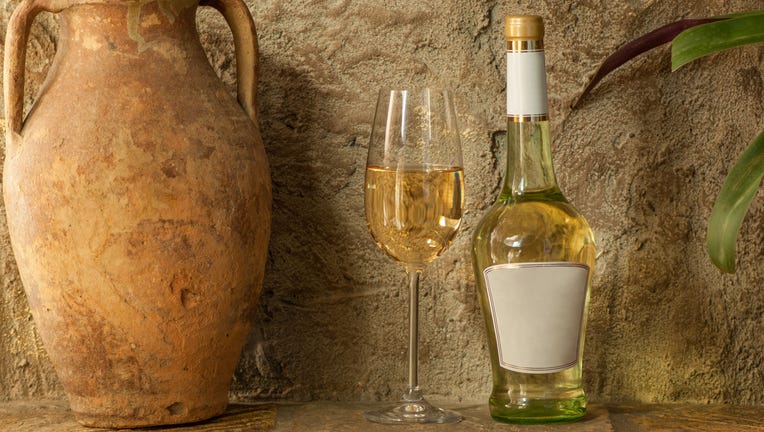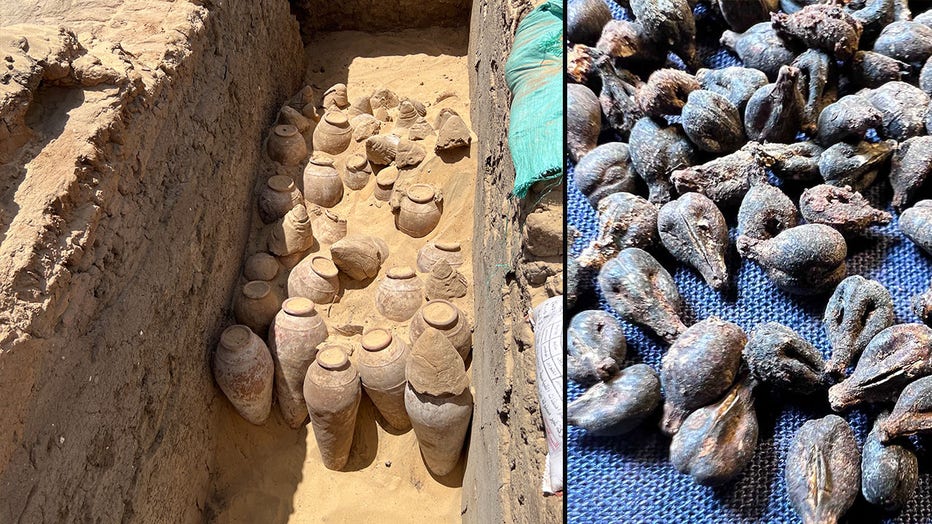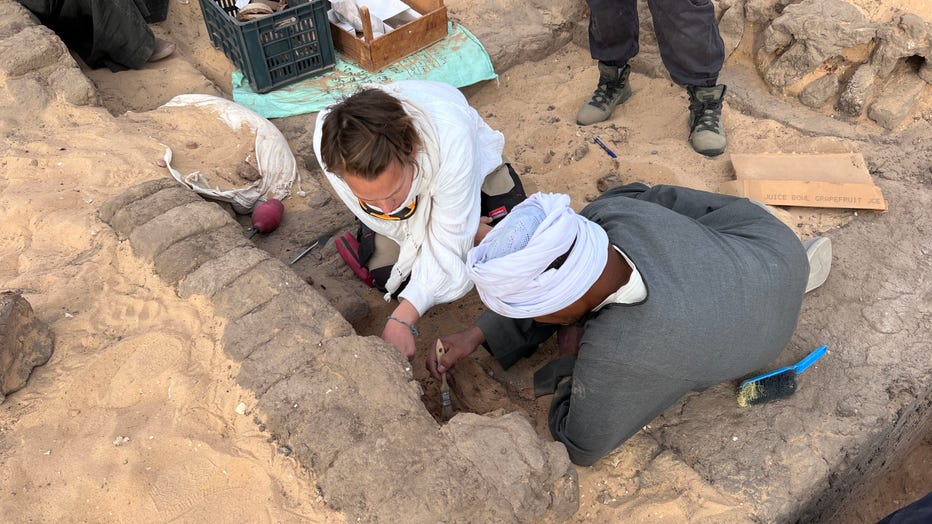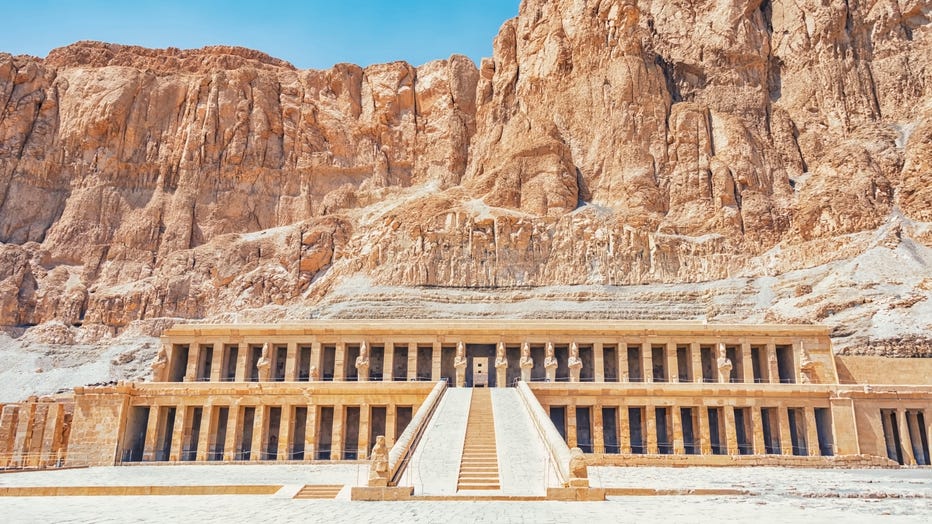5,000-year-old wine found in queen’s tomb has clue about ancient Egyptian rulers

File image of an old clay jug and a bottle of white wine. via Getty Images
The discoveries of an archaeological team in Egypt are fueling speculation that a woman could have been one of the first pharaohs of the ancient kingdom.
A team in Abydos, which is an area along the Nile River not far from Luxor, has been excavating the tomb of Queen Meret-Neith and says their findings could challenge the way we know history.

The tomb complex of Queen Meret-Neith in Abydos during excavation. Credit: EC Köhler
It may not look like much, but this is the burial site for Queen Meret-Neith. She’s the only woman to have her own monumental tomb in Abydos, which is documented to be ancient Egypt’s first royal cemetery. Her tomb dates back to Egypt’s First Dynasty, which is around 3,000 B.C., when Upper and Lower Egypt united into what we know as the ancient kingdom today.
In her tomb, an archaeological team found hundreds of large wine jars that were well preserved, with some even in their original state containing 5,000-year-old wine.

(L) 5000-year-old wine jars in the tomb of Queen Meret-Neith in Abydos during the excavation. The jars are in their original context and some of them are still sealed. (R) Excellently preserved grape seeds were found in the sealed wine jars. Photos c
Ancient grape seeds were also found in many of the sealed jars.
The team, which is a German-Austrian team led by an archaeologist from the University of Vienna, says inscriptions in her tomb testify that she was "responsible for central government offices such as the treasury, which supports the idea of her special historical significance."

Excavations in the tomb complex of Queen Meret-Neith in Abydos Photo: EC Köhler
RELATED: Pizza at Pompeii: Newly-discovered painting shows the food’s ‘distant ancestor’
The first female pharaoh?
"She was probably the most powerful woman of her time and today's researchers speculate that Meret-Neith may have been the first female pharaoh in ancient Egypt," the University of Vienna team stated in a press release.
As History understands it today, the first female pharaoh was Queen Hatshepsut, whose well-preserved tomb is a popular tourist site about 100 miles away. She ruled in the 18th dynasty, some 1,500 years later.

Mortuary Temple of Hatshepsut in Luxor, Egypt. Getty Images
But the team contends the discoveries in Meret-Neith’s tomb "(fuel) speculation that Meret-Neith was the first pharaoh of ancient Egypt and predecessor of the later Queen Hatshepsut."
Meret-Neith’s burial chamber also includes the tombs of 41 courtiers and servants.
For now, her true identity remains a mystery.
This story was reported from Detroit.

